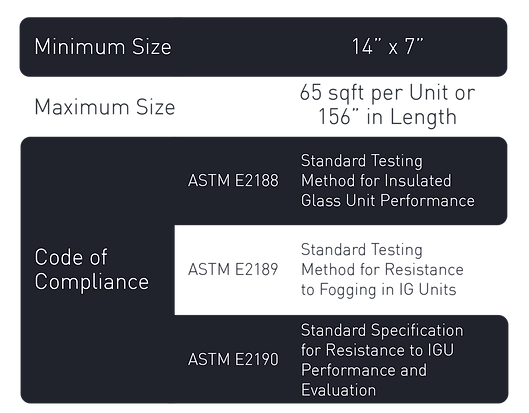
INSULATED GLASS (IGU)
Insulated glass units are composed of two or more layers of glass separated by a spacer. The most prevalent type of insulated glass unit features two glass lites and one sealed air space, This configuration is often referred to as dual pane, double pane, or simply IGU (Insulated Glass Unit). While double pane is the most common IGU makeup, Insulite Glass produces many other insulated glass configurations including Triple insulated and Laminated insulated units. Insulite offers insulating glass unit thicknesses from 7/16” (11mm) to 2” (51mm). Insulite Glass has been fabricating high-performance insulating glass units for over 30 years.
Insulated glass units consist of two silicone seals, a primary and a secondary seal. These units are specifically engineered to handle thermal expansion and pressure-induced stress, while also serving as effective barriers against water and moisture infiltration. Additionally, they ensure a secure and gas-tight enclosure, preserving any specialty gas fill and effectively minimizing condensation.
BENEFITS OF INSULATED GLASS UNITS
The main advantage of insulated glass lies in its ability to enhance solar performance by minimizing heat gain or loss. By integrating insulated glass with various other components, a diverse range of configurations can be achieved, further enhancing its performance benefits.
Apart from its enhanced solar performance, insulated glass provides a broader range of coating options. This includes Low-E coatings that cannot be exposed directly and are, therefore, not viable with monolithic glass. However, these coatings can be applied inside the insulated unit, where they remain safeguarded within the sealed space.
COMMON INSULATED GLASS MAKEUPS

.png)

